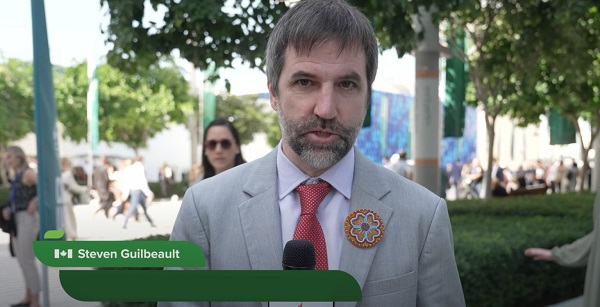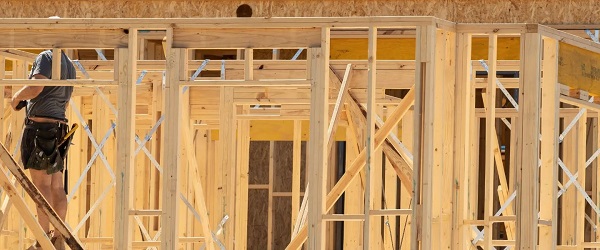Alberta
Alberta piloting test to supply industry with fuel derived from worn-out tires
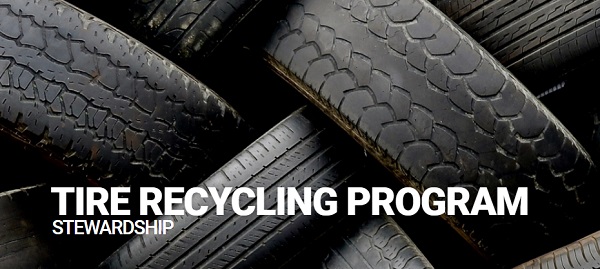
Turning industrial waste into energy |
Alberta is launching a Tire-Derived Fuel pilot to test the effectiveness of turning old, worn-out tires into energy to power industrial facilities.
Alberta’s government is helping industry reduce emissions, save money and turn landfill waste into energy – all through technology.
Around the world, demand for industrial and manufacturing products is rising rapidly. Companies are looking for more ways to repurpose waste, decrease costs and increase operational efficiency while reducing emissions, but these improvements can be expensive and complex.
Alberta’s government and industry are stepping up and setting an example for the world, investing in two new programs to help more industrial and manufacturing companies reduce emissions, re-use waste and keep powering the world. In partnership with Lafarge Canada, the province will launch a program to expand the use of recycled spare tires and will invest $10 million in a second program to help industry save on their energy bills.
“We are investing in lower-emission fuels and facility upgrades to set our energy sector up for continued success. These new initiatives will keep our province at the forefront of technological advancement and ensure Alberta continues to lead the way to reduce emissions and turn waste into energy.”
New Tire-Derived Fuel Pilot Project
Alberta is launching a Tire-Derived Fuel pilot to test the effectiveness of turning old, worn-out tires into energy to power industrial facilities. Led by the Alberta Recycling Management Authority (ARMA), the pilot will turn up to 1.5 million used tires into up to 15,750 tonnes of chips that will become tire-derived fuel in the coming months.
Lafarge Canada’s new Low-Carbon Fuel Facility will participate in the pilot project. They have the equipment needed to burn waste-derived fuels, reducing their use of natural gas. Results from the pilot will be used to help determine whether tire-derived fuel should be permanently added to the province’s existing Tire Recycling Program.
New Strategic Energy Management for Industry Program
Alberta’s government is also investing $10 million from the industry-funded Technology Innovation and Emissions Reduction (TIER) fund to help launch the new Strategic Energy Management for Industry program, open for applications on Oct. 17.
Delivered through Emissions Reduction Alberta, the program will cover the cost of energy assessments and capital retrofits to save Alberta-based industrial and manufacturing facilities money on their energy bills. It will also provide energy management training, knowledge sharing and technical support.
Agriculture, forestry, fishing, hunting, mining, oil and gas, and cement companies will all be eligible for funding. Additional funding will also be provided by the Government of Canada and announced soon. More information will be shared on Emissions Reduction Alberta’s website.
New Low-Carbon Fuel Facility
Thanks in part to $10 million in TIER funding delivered through Emissions Reduction Alberta, Lafarge Canada has opened a cutting-edge Low-Carbon Fuel Facility that will replace up to 50 per cent of the natural gas it uses with low-carbon fuel from construction demolition waste. This will keep up to 120,000 tonnes of construction and demolition materials out of landfills and produce up to 30,000 fewer tonnes of emissions.
“The Tire-Derived Fuel Pilot program is another step in resource recovery. We appreciate the support from the Government of Alberta and industry partners like Lafarge Canada, enabling us to explore innovative recycling technologies to assess its viability. This pilot initiative not only addresses near-term tire stockpile reduction needs from our Tire Recycling Program, but also brings the potential to further boost economic opportunities across the province.”
“Improving the efficiency of industrial and manufacturing processes and facilities is the quickest, most cost-effective way to lower energy bills and stay competitive. But it takes knowledge, expertise, training and capital. With SEMI, Alberta companies will soon have even more opportunity to invest in energy and cost-saving technologies.”
“We’re pleased to see the Government of Alberta’s continued commitment to technology and innovation funding, which plays a crucial role in driving innovation and sustainability across all industries. Lafarge Canada has directly benefited from past support, helping us advance our low-carbon solutions. These funding opportunities empower us to accelerate our efforts to reduce emissions and contribute to a more sustainable future for Alberta.”
Quick facts
- Albertans have recycled more than 149.5 million tires and diverted hundreds of thousands of tonnes of tires from landfills since 1992 through ARMA’s existing Tire Recycling Program.
- Scrap tires are currently processed under ARMA’s Tire Recycling Program and turned into drainage material in municipal landfills, playground surfaces, sidewalk blocks, roofing tiles and landscaping mulch, but with markets for recycled tire products declining, alternative outlets are needed to avoid tire stockpiles.
- To date, Emissions Reduction Alberta has invested $960 million from the industrial carbon price toward more than 290 projects worth over $8.6 billion, estimated to reduce 40 million tonnes of emissions by 2030.
Related information
Alberta
Halfway River First Nation makes history with Montney natural gas development deal
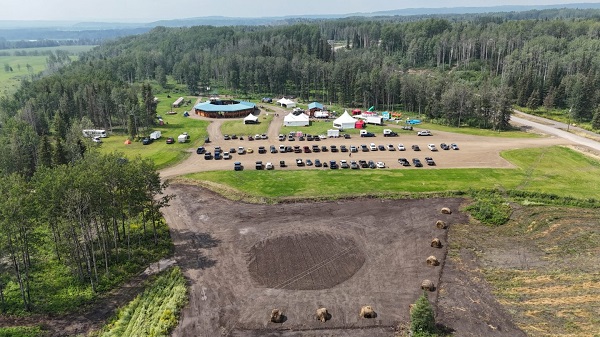
In northeast B.C., about 75 kilometres from Fort St. John, Halfway River First Nation sits in the heart of the Montney, one of North America’s largest natural gas plays. Photo courtesy Halfway River First Nation
From the Canadian Energy Centre
By Will Gibson
Greg Kist has seen plenty of change during more than three decades working in the energy industry. But the former executive with Petronas and Progress Energy has rarely experienced a history-making moment.
That happened in July 2024, when the B.C. government awarded the Halfway River First Nation what’s known as oil and gas tenure in the heart of the Montney play.
It’s an agreement that grants the Nation decision-making authority over the exploration and development of petroleum and natural gas resources on more than 34,000 hectares of Crown land in its traditional territory, located approximately 1,000 kilometres northeast of downtown Vancouver.
That agreement is now moving further into action with a deal between Halfway River-owned Tsaa Dunne Za Energy (TDZE) and ARC Resources.

Members of the Halfway River First Nation participate in a field tour with the BC Energy Regulator in June 2025. Photo courtesy BCER
The agreement, signed earlier this year, will see TDZE work with Calgary-based ARC to develop about 25 per cent of the tenured land.
The region is adjacent to ARC’s existing Attachie natural gas operations, which are rich in high-value natural gas liquids.
The company describes Attachie as one of its most profitable assets, which can be expanded thanks to the TDZE agreement.
“This land was deferred from development for more than two decades while sitting in the premier natural gas play in North America,” says Kist, one of TDZE’s managing executives.
“Unlocking it will generate all kinds of economic activity and royalties for the B.C. government that help pay for schools and health care. But it will also generate the same benefits for the Halfway River First Nation.”
ARC plans to integrate the new areas using existing roads, pipelines and other infrastructure from Attachie.
Developing the land will still require consultation with the Halfway River First Nation.

Drilling in the Montney play straddles the border between northeast B.C. and northwest Alberta. Photo courtesy ARC Resources
“This is very much about Tsaa Dunne Za Energy delivering the best return on this particular asset for its shareholders, which are the members of the Halfway River First Nation,” Kist says.
In addition to granting tenure to develop oil and gas on the land, the B.C. government and Halfway River have implemented a landscape planning pilot to mitigate the impacts of development on the Nation’s Treaty 8 rights and manage potential cumulative effects of new development.
“The tenure award and landscape planning pilot will help to ensure that oil and gas development in these areas is sustainable and managed in accordance with the values of the Halfway River First Nation,” Chief Darlene Hunter said in a statement.
Kist sees the agreement as a template for other governments, energy companies and First Nations to follow.
“This has the potential to be the model for cooperative development so that we can develop resources in the right way that benefits governments, First Nations and industry. I’m proud to be a part of this because everybody involved wins from this.”
Alberta
With no company willing to spearhead a new pipeline under federal restrictions, Alberta takes the lead
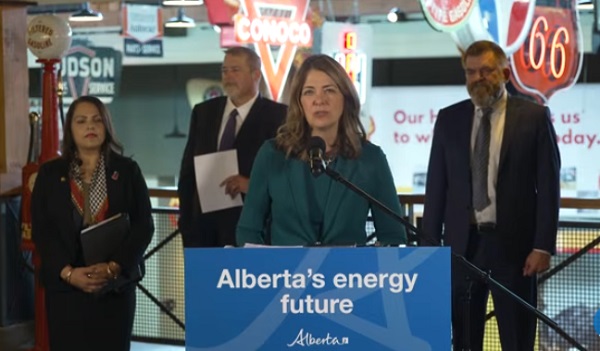
Alberta leads as proponent for West Coast pipeline
Alberta’s government, acting as proponent, will lead a technical advisory group of companies with Indigenous participants to advance a West Coast pipeline application.
With the advice and technical support of three major pipeline companies, Alberta’s government, acting as proponent, will develop and submit a formal application for a project of national significance to the Federal Major Projects Office under the Building Canada Act. Indigenous communities in Alberta and British Columbia are being engaged from Day 1. Indigenous co-ownership, partnership and perspectives will be critical to every stage of project development and execution.
The advisory group will undertake the early planning, technical assessment and application for an oil pipeline proposal to the northwest coast of British Columbia. When completed, the project will significantly increase market access to responsibly and ethically produced Canadian crude oil products.
“This project application is about more than a pipeline; it’s about unlocking Canada’s full economic potential. By doing this the right way from Day 1 with Indigenous partners and industry expertise, we will deliver a proposal that proves this project is undeniably in the national interest. Together, we are charting a path to secure Canada’s energy future for generations while bringing the world’s most ethically and responsibly produced energy to market.”
The goal of this planning and pre-front end engineering and design work is to determine the general path and size of the pipeline, quantify costs, initiate early Indigenous engagement and partnership, and make the clear case that this pipeline is in the national interest. Alberta’s government will contribute $14 million to support early planning work including cost estimates, engagement and development of a credible proposal for federal consideration.
“We already see Canada as an energy powerhouse, and with the right infrastructure, moving toward superpower status is both realistic and achievable. Increased market access from Alberta to tidewater will scale Canada’s export markets and diversification, while supporting the federal government’s newly stated ambition of becoming an energy superpower.”
Indigenous leadership and perspectives are essential to guiding major projects like this that will grow our economy, safeguard the environment and create lasting opportunities for Indigenous partners. Our engagement strategy will reflect the diversity of Indigenous governance structures and be tailored to reflect each community’s unique context. By bringing together innovation and technology with Indigenous perspectives and cultures, we are creating the conditions for meaningful dialogue and the right mix of expertise to shape a project that reflects shared values and priorities.
“This is about partnerships and building trust from Day 1 – ensuring Indigenous voices shape the decisions that affect their lands and futures. Alberta’s government is committed to respectful, transparent engagement that recognizes Indigenous communities as rights holders, leaders and owners in the prosperity we build together.”
“Fort McKay First Nation welcomes the opportunity to be engaged from the very beginning of this important project. True partnership means listening to Indigenous voices, respecting our lands and ensuring our people share in the benefits. By working together with government and industry, we can create opportunities that strengthen our communities, while showcasing the incredible potential of Alberta’s energy sector.”
“The National Coalition of Chiefs has always said that oil and gas participation, including ownership opportunities, can be a way to drive economic reconciliation. We are happy that Alberta is leading an effort to get another pipeline to the West Coast, and we are especially happy that they have decided to engage with Indigenous nations in B.C. and Alberta right from the very beginning of the process.”
The technical advisory group will include multiple industry participants, bringing expertise in engineering, construction, Indigenous relations and market demand. The groups efforts will be supervised by a panel that currently includes:
- Larry Kaumeyer, deputy minister, Energy and Minerals (co-chair)
- Alex Pourbaix, executive chair, Cenovus (co-chair)
- Rajan Sawhney, Minister of Indigenous Relations
- Hal Kvisle, energy industry executive
- Roderick Graham, board director, AER
- Chief Jim Boucher, chair, president and co-founder, Saa Dene Group of Companies
- Al Monaco, former president and chief executive officer at Enbridge
- Corey Bieber, board director, Vermilion Energy
- Chris Sankey, principal owner and president, Blackfish Enterprises
- Dave Lamouche, president, Metis Settlements General Council
The project of national significance application process will explore all opportunities to deliver Alberta’s responsibly produced energy resources to market, while carefully assessing all aspects required to advance a northwest coastal crude oil pipeline.
Quick facts
- The expected application submission to the Federal Major Projects Office is approximately spring of 2026.
- The three companies participating in the technical advisory group are South Bow, Enbridge and Trans Mountain.
- Canada has the fourth-largest proven oil reserves globally and is the fourth-largest global oil producer.
- Net export receipts of crude oil have climbed from $6 billion in 2000 to $130 billion in 2024.
- Additional infrastructure from Alberta’s oilsands to B.C.’s coast will ensure Alberta energy resources can contribute to meeting significant Asian demand from countries like Japan, Korea, China and India.
-

 Business2 days ago
Business2 days agoTaxpayers deserve proof of how politicians spend their money
-

 Business2 days ago
Business2 days agoOttawa’s civil service needs a Chrétien-style reset
-

 Fraser Institute2 days ago
Fraser Institute2 days agoAboriginal rights now more constitutionally powerful than any Charter right
-

 Alberta2 days ago
Alberta2 days ago$150 a week from the Province to help families with students 12 and under if teachers go on strike next week
-

 Business2 days ago
Business2 days agoNew PBO report underscores need for serious fiscal reform in Ottawa
-

 International2 days ago
International2 days agoTrump gives Hamas four days to choose: peace or obliteration
-

 International2 days ago
International2 days agoArab and Muslim nations rally behind Trump’s Gaza peace plan
-

 Business2 days ago
Business2 days agoPfizer Bows to Trump in ‘Historic’ Drug Price-Cutting Deal


